These fast-growing climbers will transform your pergola into a romantic, botanical wonderland
Seek out bright, scented climbing plants to give your outdoor shaded space a show of color all year round

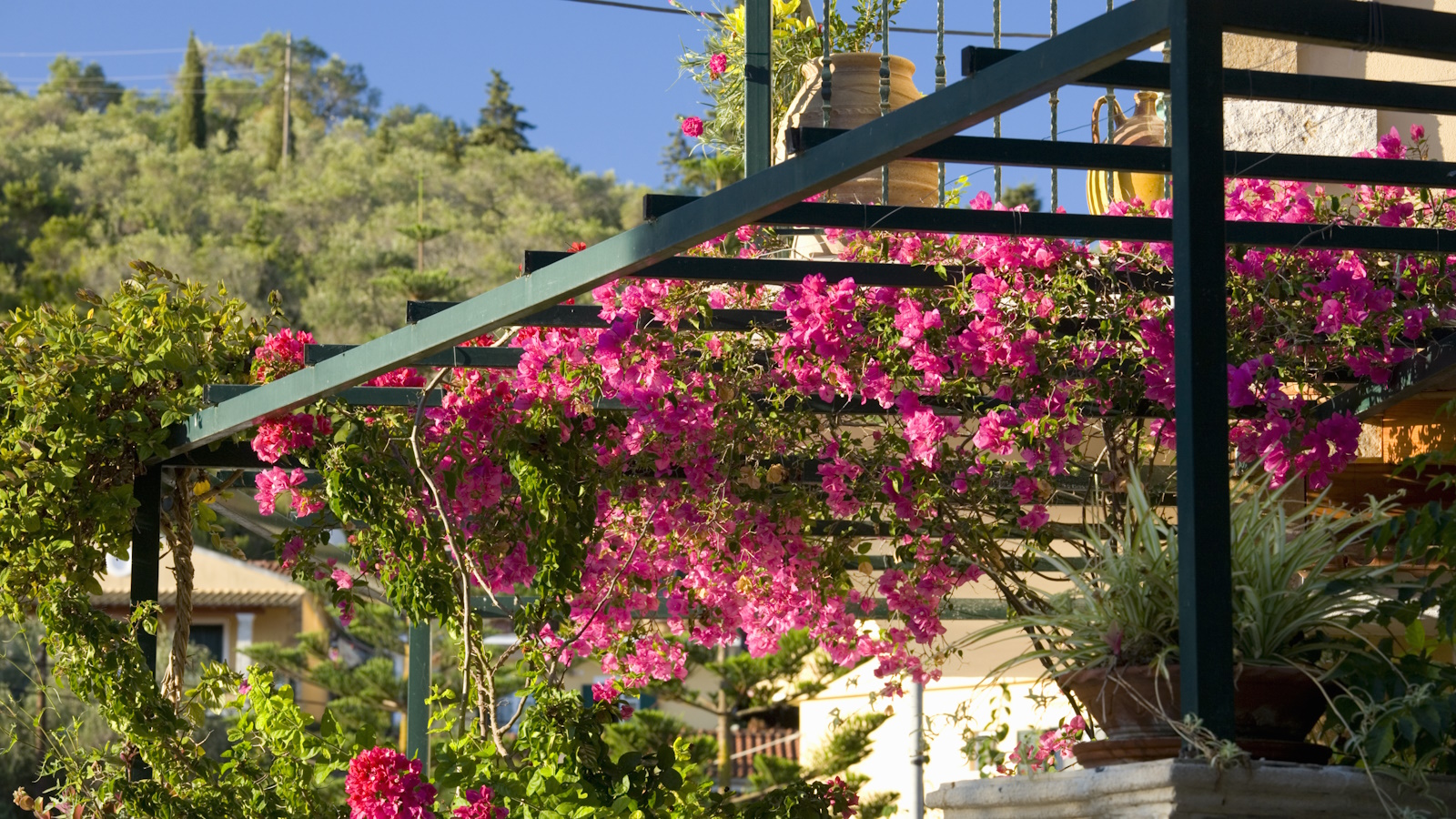
There is something rather magical about a pergola. When it is in full bloom, wreathed in scent, covered with textured foliage and occasionally hung with tiny outdoor lights, it can feel intimate, romantic and utterly relaxing.
The simple framework of posts and beams are a great way to provide shade and ambience over a terrace or patio, creating a cozy outside room for lounging or dining in. Pergolas can also cover a walkway, helping to zone the space and shield the pathway from the sun while acting as an aromatic entrance to another part of the yard.
Familiar plant picks for pergolas include climbing roses, wisteria and jasmine, but we look at some other fast-growing and trainable climbers that will quickly wrap their way round your pergola frame, and offer a heady combo of color and perfume.
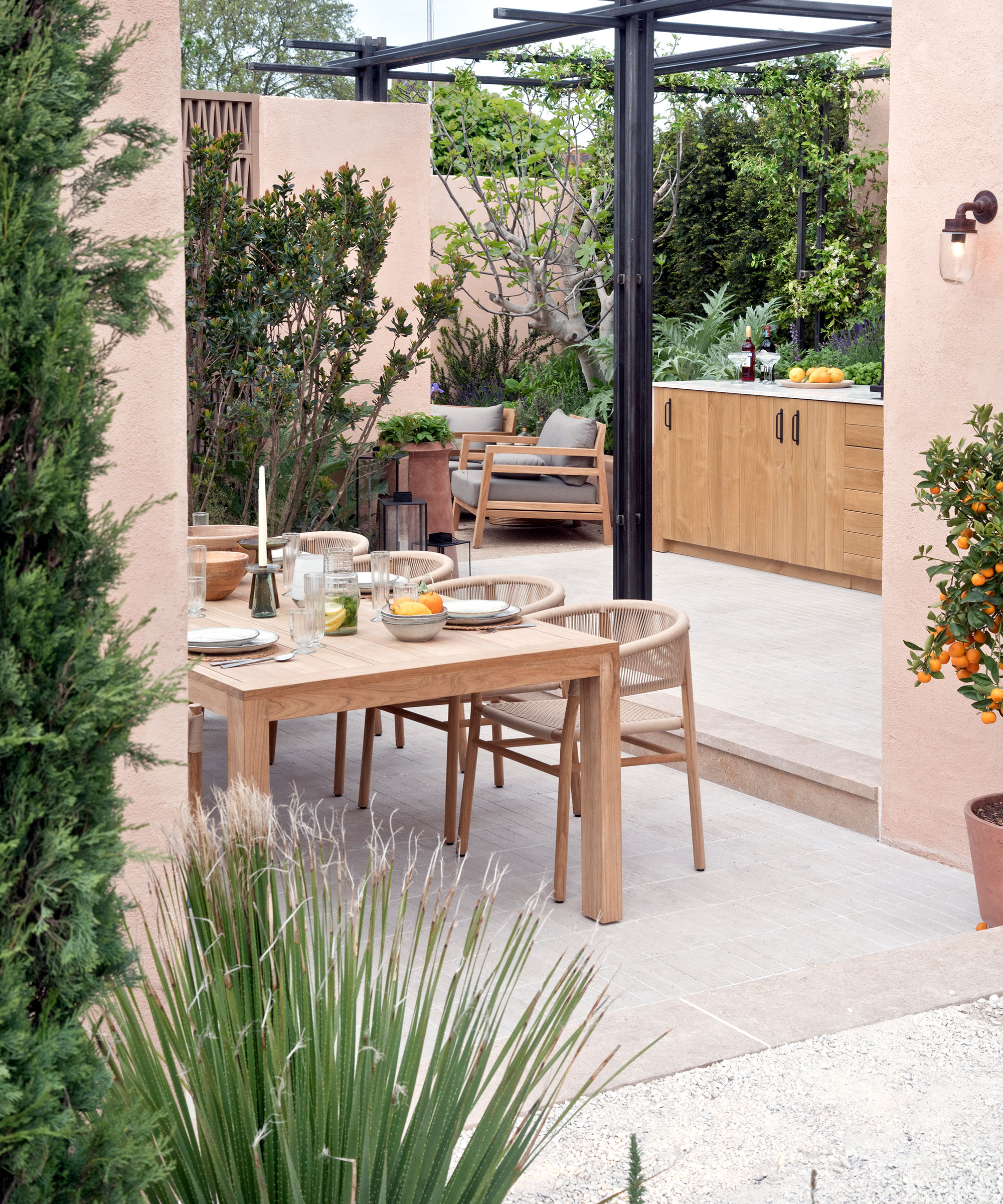
What is a pergola?
A pergola is an outdoor garden feature that dates back to the Ancient Egyptians, and has been in more common use since Roman times when they were attached to exterior walls and supported by pillars or columns.
The name comes from the Latin word for a projecting eave – pergula. They used to be built from brick, stone and timber, but materials used for modern pergolas now include premium aluminium, and fiberglass, like this wall-mounted kit from Pergola Kits USA.
Here are eight of the best climbers to grow up a pergola for fast coverage and a romantic effect.
1. Bougainvillea
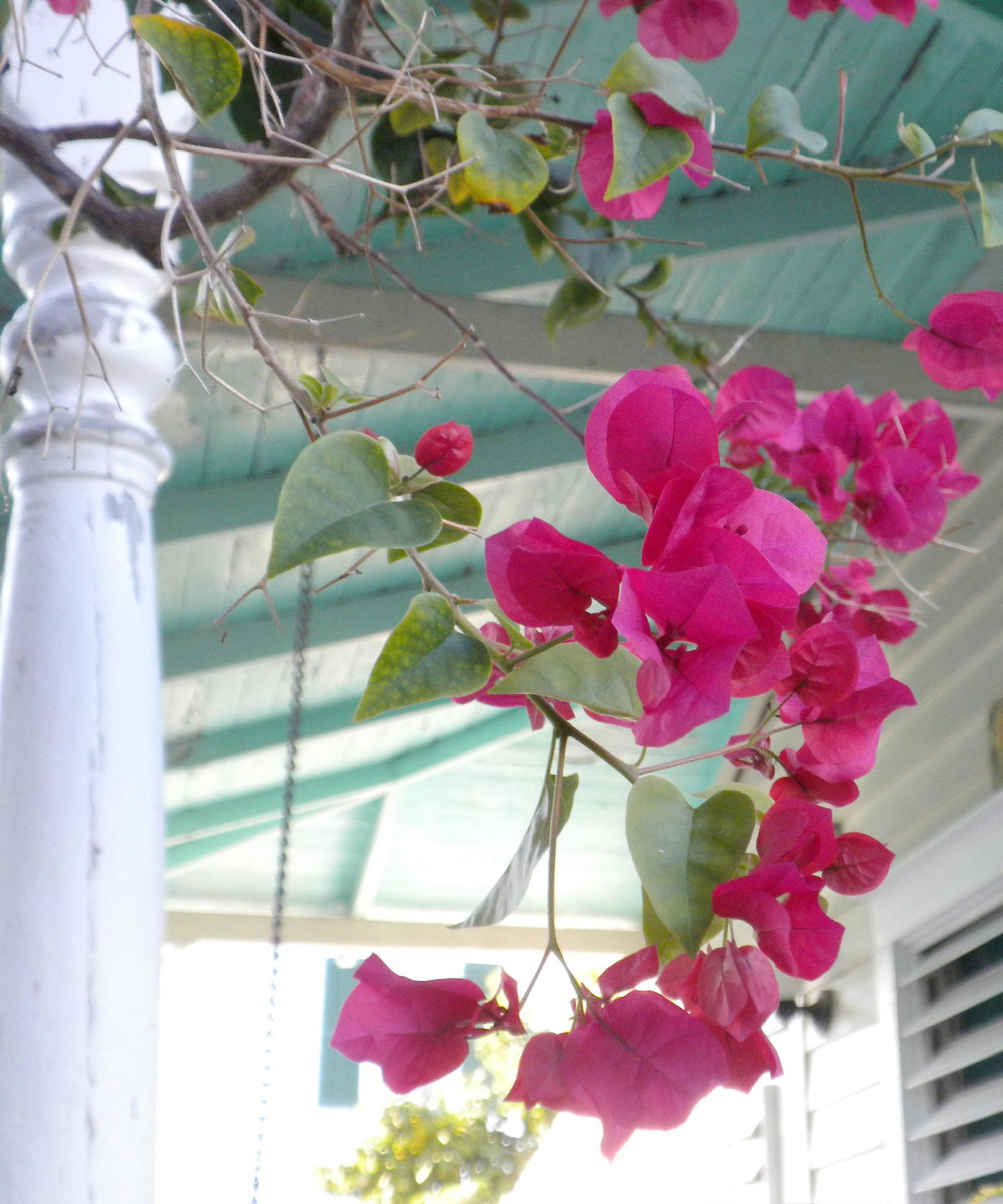
'Bougainvillea is one of the most beautiful and most overlooked plants for pergolas,’ explains horticulturalist Matthew Wilson. ‘It will bring a tropical aspect to your garden space with its bracts (the papery leaves surrounding the small white flowers) coming in many bright colors. It does well in USDA hardiness zones that have a warm climate, such as 8-10, provides color throughout the year and is low maintenance.’
This sprawling evergreen vine can reach heights of more than 20ft. It needs full sun and well-drained acidic soil. It can flower throughout the spring, summer and fall, but benefits from pruning in the late summer. The bougainvillea stems are thorny, so be careful where you place it, and wear gloves when you prune.
Design expertise in your inbox – from inspiring decorating ideas and beautiful celebrity homes to practical gardening advice and shopping round-ups.

As a horticulturist and the CEO at handygardeners.com, Matthew has spent over a decade turning neglected yards into beautiful, functional spaces, and is always ready to share his expertise.
2. Akebia
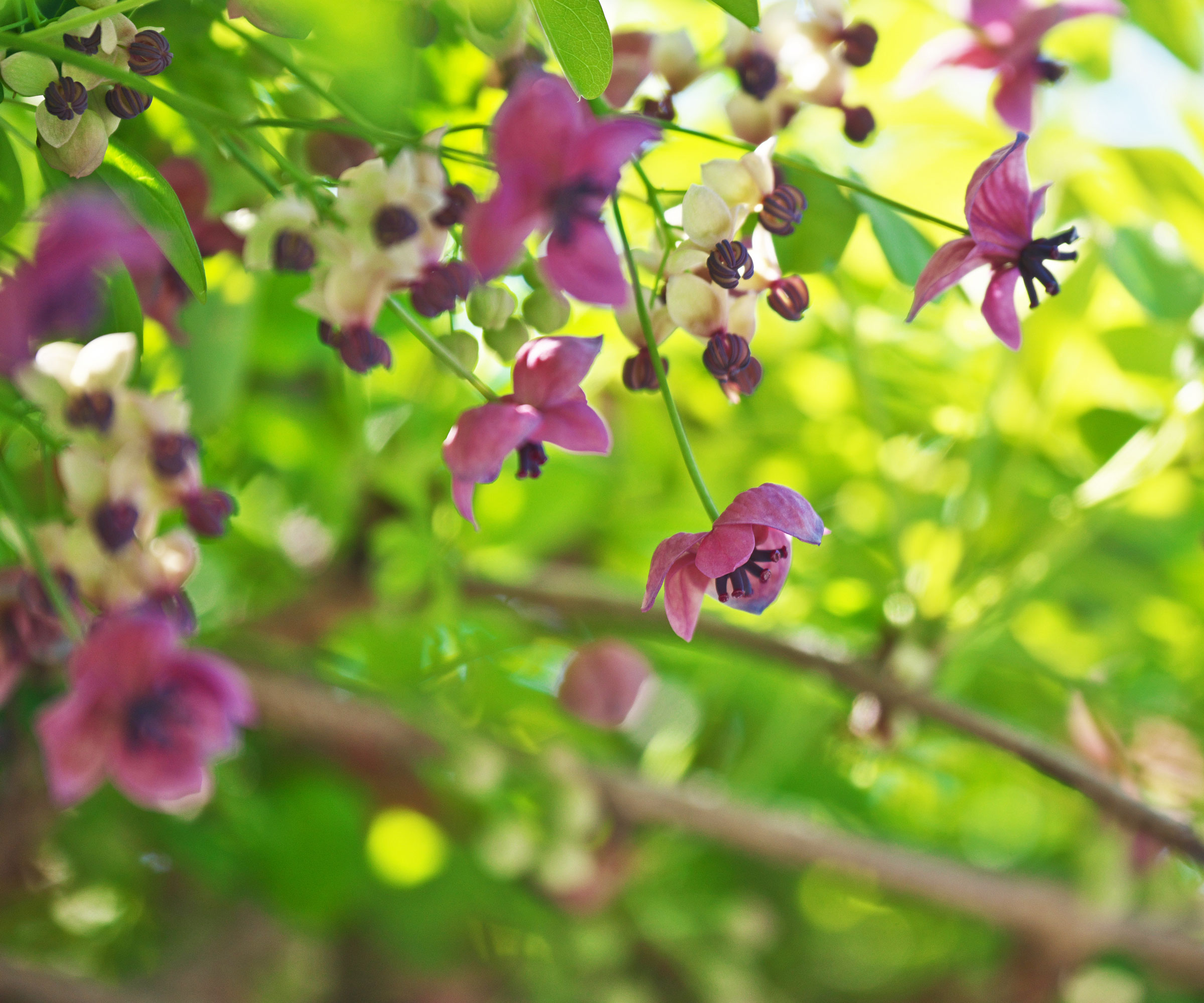
This semi-evergreen twining woody vine is also known as the chocolate vine, earning its name due to its purple-brown blooms and sweet, chocolatey smell. It is without doubt one of the best plants to grow up a pergola.
‘Akebia produces delicate, fragrant flowers and attractive foliage. It is fast-growing but tends to be pretty easygoing, tolerating a wide range of conditions,’ says Matthew. ‘It can be planted in more moderate climates, such as zones 5-7, as it can take cooler temperatures. It will still require some care and occasional winter protection (they can be damaged by late frosts) but can be long-lived and beautiful.’
Akebia can grow up to 40 ft, and likes sandy, loamy soil that is moist and well-drained. It thrives in full sun or partial shade and flowers from March to May. It also produces eggplant-like fruits in late summer, and the leaves can also be used to make tea.
3. Passionflower

If you want quick coverage for your pergola, passion flower will soon have it swathed in flowers that are remarkable in the intricacy of their design.
‘This is among the fastest growing vines suitable for climbing a pergola,’ says Nathan Thorne, who runs an online flower company. 'It grows in USDA zones 6-10, where the climate is warm to temperate.’
There are many varieties of passion flower, most of which produce edible fruits. The Passiflora incarnata is also known as the 'maypop', and earns its nickname from the sound the fruit makes when stepped on. But the most remarkable thing about these tendril-bearing vines are the showiness of the flowers, which are an often multicolored mix of petals, corona filaments and stigma.
Plant in moist, well-drained soils in a sunny spot or in partial shade. Passion flower plants blooms from midsummer to early fall, but each flower only lasts about a day. Be sure to prune passion flowers regularly to keep them under control.
You can find passion flower starter plants at Walmart.

Nathan is a horticulturist at Handyflowers.com. With his plant knowledge, he can offer expert advice on what will thrive in different areas all over the US and turn your yard into a horticultural wonderland.
4. Hops
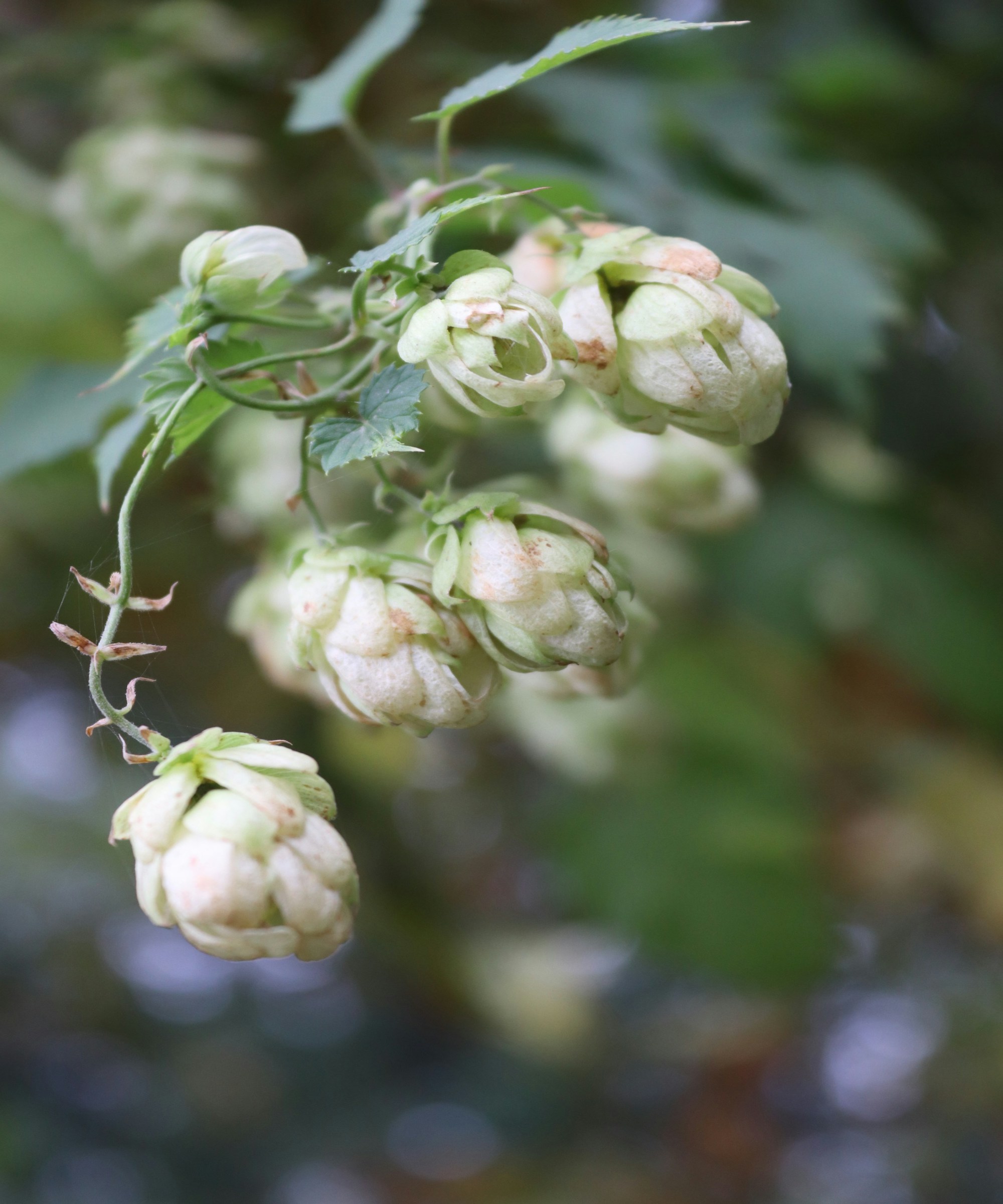
If your pergola is intended for drinking or dining out in, why not surround yourself with one of the ingredients of your favourite beverage. Humulus lupulus or hops can help you create your very own beer garden.
‘In addition to the role they play in fermentation, a hop plant has foliage that offers good shade and delicate flowers. The green cones, which are the fruit, provide a textural layer to a pergola,’ says Nathan. ‘Hops have a high growth rate in hardiness zones 3-8, and the fruit persists through winter, taking on a brownish color.'
Hops bloom from June to July and have male and female flowers that grow on different plants; it is the female that produces the fruit. Position is important to hops as they like up to 12 hours of full sun. They grow vigorously in well-drained soil and produce twisting stems – known as bines – between 20 and 30 ft long, with stiff hairs to hold onto a trellis or pergola frame and create a natural screen.
5. Climbing hydrangea
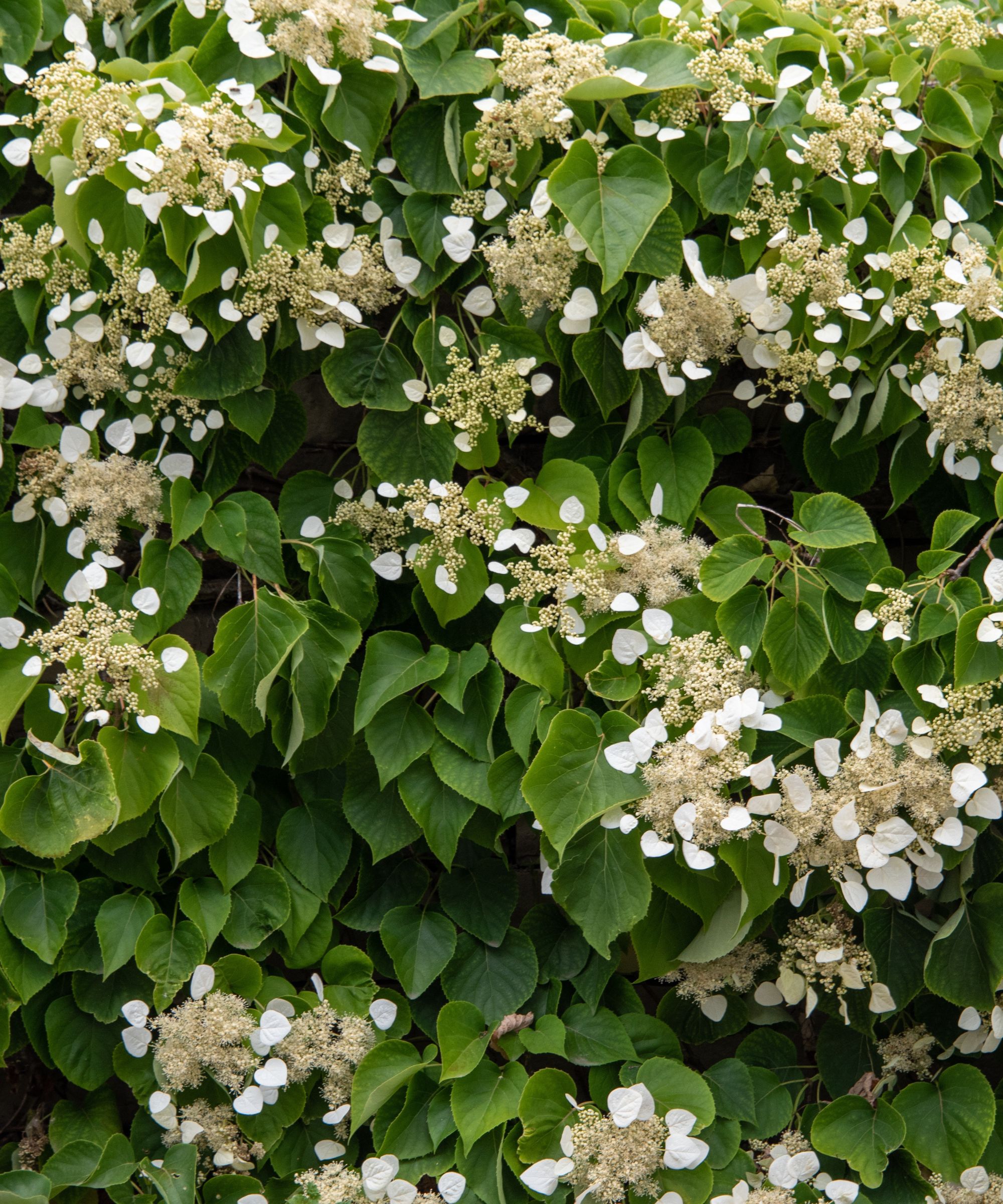
Renowned for their big, rounded flower heads in shades of pink, blue and white, hydrangeas are more familiar as large, dense bushes. But there is a variety that will bring a more subtle beauty to a pergola - and it grows well in shade.
Climbing hydrangeas, or Hydrangea petiolaris is a perennial that thrives in well draining soil in USDA hardiness zones 4-8, it flowers in spring and summer, and has vibrant dark green leaves that turn yellow in fall then drop off in winter to reveal the textural bark of the vine. Keep the pruners handy though, as once it starts this climber can reach heights of 50ft.
You can cover your walls and garden framework with flowers, even in the shade, with a climbing hydrangea from Nature Hills.
6. Trumpet vine
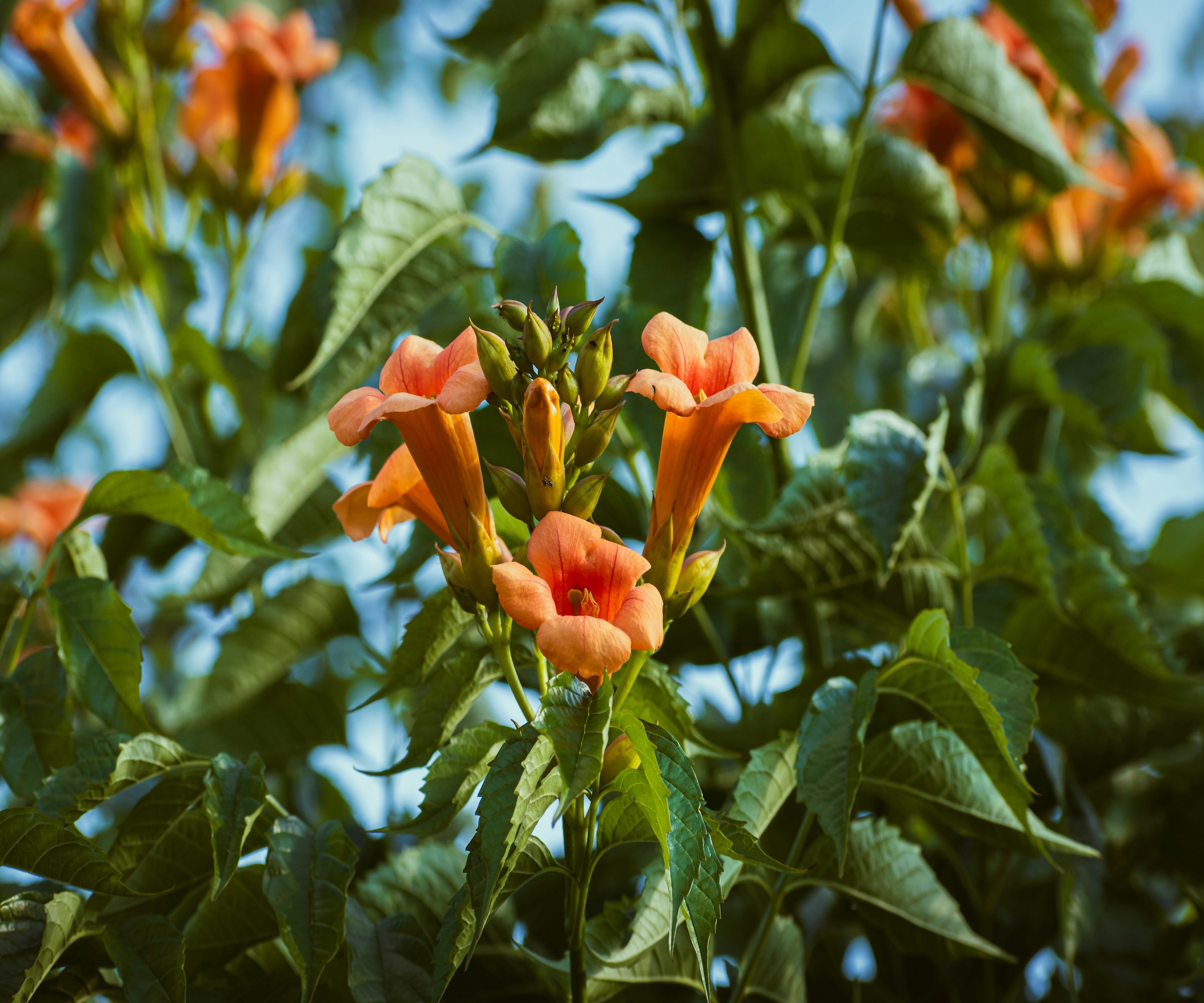
Aptly named, the flowers of this deciduous, woody vine are exactly as described, with narrow, tubular bases that flare out at the end as if emitting a musical note.
‘The trumpet vine is a real eye-catcher with its clusters of orange and scarlet blooms and thick emerald-green foliage,’ says Dennis Sons, owner of TN Nursery. ‘You can't go wrong with this plant. Not only is it stunning, but it lures wildlife like hummingbirds and honey bees. It requires little to no maintenance and thrives in dry areas.
'They can thrive in USDA hardiness zones 4–9, which covers 48 states,’ he adds.
A vigorous grower, this perennial can be left to its own devices once planted in sandy, clay or well-drained soil. It prefers sun, though will also grow in partial shade, and produces a show of color when it flowers in summer.
However, it is also known as the trumpet creeper and is considered invasive in some areas as it can spread rapidly and choke other plants. A strict regime of pruning should keep it under control.
Trumpet vines come in a number of shades, but you can add a blaze of color with the First Editions Atomic Red from Nature Hills.
As the CEO of America’s largest native online plant nursery, which is located in the nursery capital of the world, Mcminnville TN, Dennis is always ready to share his tips and give advice to fellow gardeners.
7. Virginia creeper
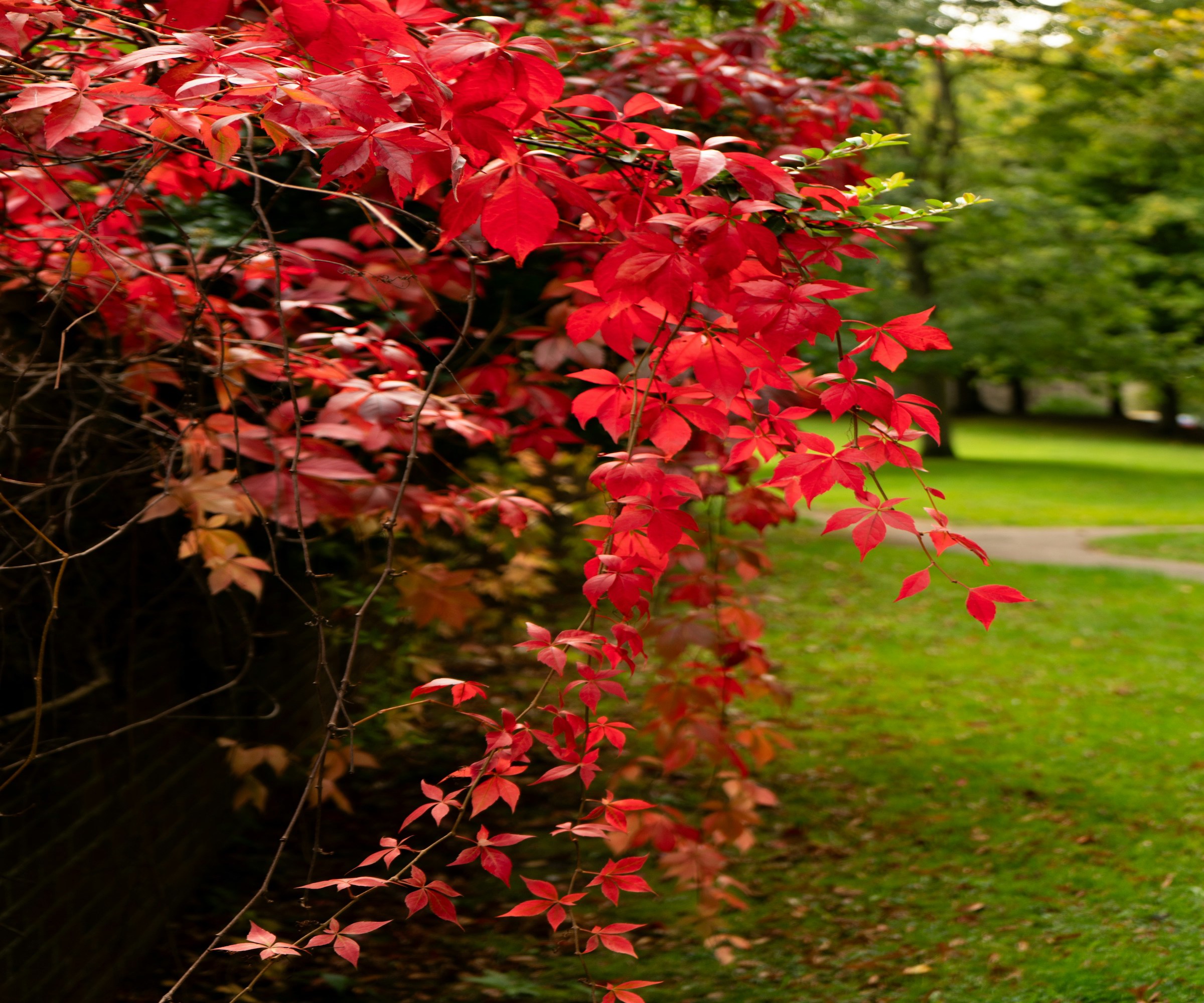
The fall foliage rather than the spring flowers are the star of the show with Virginia creeper, also known as woodbine. The deciduous climber has leaves composed of five leaflets that turn from green to crimson in an impressive pre-winter display.
‘This native plant is often overlooked when it comes to landscaping, but it is a beauty,’ says Dennis. ‘It is a stunning evergreen, so your pergola will be vibrant even in the coldest months.
'In the fall, its foliage takes on a fiery orange to bright scarlet color. It thrives in zones 3-9, and is a very fast grower, so your pergola will be full and lush in no time. The only maintenance it needs is a good trim in spring and fall.’
Virginia creeper clings on to supports and surfaces with sticky, disk-like appendages on its tendrils. These are sometimes hard to remove from walls, so it is better attached to a trellis.
It grows best in full sun though it will also tolerate shade, and thrives in sandy, clay or loamy soil. In late spring it produces greenish white flowers followed by dark blue berries that are toxic to humans though enjoyed by birds.
8. American bittersweet

A native vine, as its name suggests, this vigorous climber is at its best in fall when it is covered with small, orange-coloured fruit clusters.
Possibly a more unconventional option for the adventurous gardener to grow, American bittersweet can be grown in USDA hardiness zones 4-9, and boasts vibrant orange-red berries that persist through winter, providing year-round interest.
Its aggressive growth requires vigilant pruning. However, the payoff is a spectacular autumnal display that can transform an ordinary pergola into a focal point.
It likes full sun and moist or dry conditions. It is considered drought tolerant so is a good pick for a moisture-conserving landscape. It can also cope with urban pollution so will grow well even in an inner-city yard.
If you love the idea of climbing plants cascading over your pergola, how about creating an outdoor haven that you can eat (or drink) by planting a climber with edible fruits. Grape vines can be trained over pergolas and arches to make a perfect spot for wining and dining. You can find out more in our guide to growing your own grapes

Alison is a contributing gardens writer for Homes & Gardens, writing on a range of topics from plant care to garden design. She has recently landscaped the outside space of her Victorian home, replacing crazy paving and cracked slabs with new lawn, and is currently cultivating a fruit bed.